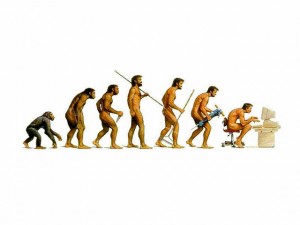or The World that Exists in Darkening Hours of the Night…
Rod Dreher linked to a post about a man who had to confront the difficulty of telling his daughter the truth about Santa Claus. The post concerns itself mostly with how we value and recount truths and myths. The connection to Santa is tenuous at best but I really liked this passage:
When we read The Hobbit, she instantly recognised dire wolves and Haast’s Eagles, even though Tolkien didn’t call them that. She understands that elves and dwarves and orcs were not exactly real, but there were many different kinds of humans once; Neanderthals were not as small as Tolkien’s dwarves but shorter and tougher than we are. There were humans who seem to have been faster than we are, or had bigger brains, or tiny bodies. I want her to know enough about the World Gone By to see its traces in folk memories around the world.
I suspect this is the reason such stories resonate with us, because they tap into a folk memory, or a sense that something is missing, in the same way that we recognise the missing pieces of a jigsaw. Fantasies about office jobs and high-rise buildings are called dystopias; the stories we fall in love with – old myths and the modern fantasy they inspired– begin with “Once upon a time” or “A long time ago, in a galaxy far, far away” or about a time “before the coming of men.”
The missing pieces of the jigsaw. What he calls folk memory, one could also call institutional or species memory. Something in our DNA that reminds us of a world that once was.
The popular conception of the Neandertal is that of a big, lumbering, unintelligent brute. This is fueled by initial scientific interpretations of the Neandertals. But some part of me thinks we havespecies memory of this now-extinct humanoid. Neandertals were something of a rival to homo sapiens. We might have also cross-pollinated them into oblivion. But perhaps something remains trapped in our collective memory that remembers the Other, the struggle to survive, to dominate and subdue and it colors our perception of these ‘beasts’. I have no scientific basis for this hypothesis… just some nagging memory, I guess, searching for that missing piece of jigsaw puzzle.
Many cultures on the planet have independent stories about dragons. In one form or another. Huge lumbering beasts with large wing that rent the air with every beat. Sleeker animals that slid through the skies. Evil, benevolent, kind, threatening. How is it that we have these conceptions if not for some nagging memory buried in our collective subconscious.
Related Post: Why Do Westerners Lie to their Children So?




